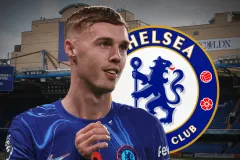- 17 hours ago
Wesley Fofana cannot solve Chelsea’s problems this season
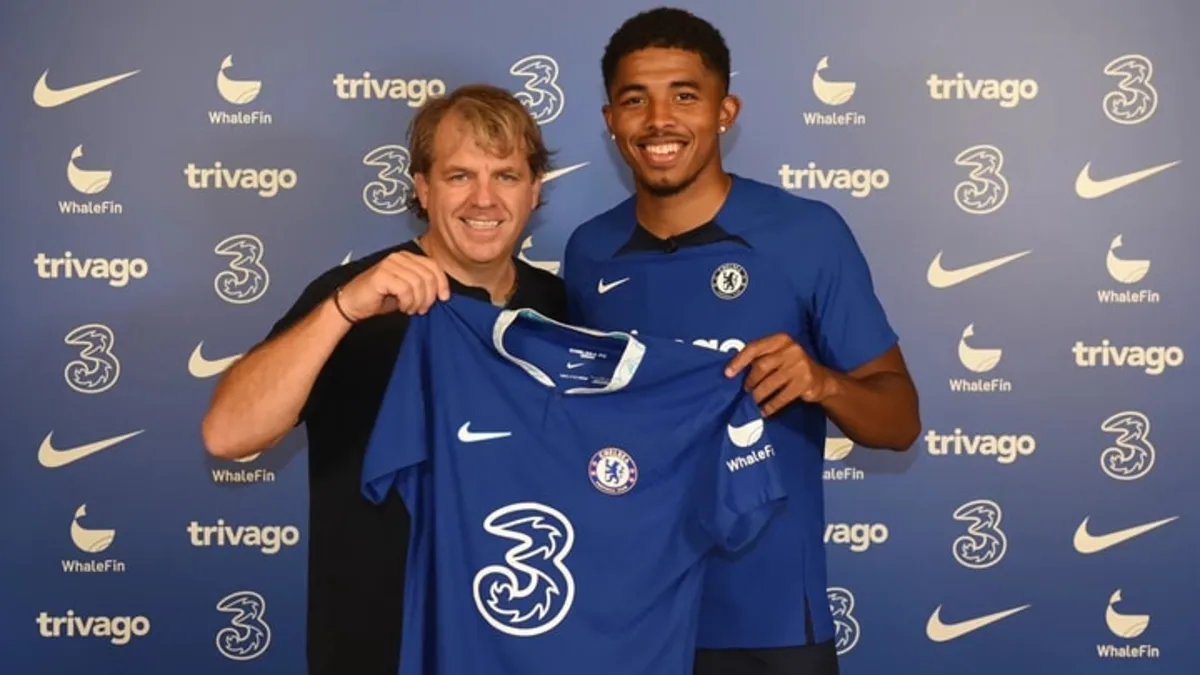
New Chelsea owner Todd Boehly claimed in June that clubs would no longer be able to spend wildly due to UEFA clamping down on its Financial Fair Play (FFP) policy, perhaps signalling to fans to limit their expectations.
They needn’t have done that, though, because Chelsea ended up breaking the world record for money spent on transfers in a transfer window.
Marc Cucurella, Pierre-Emerick Aubameyang, Raheem Sterling and Kalidou Koulibaly were the marquee signings for the Blues, but the one with the biggest transfer fee was Wesley Fofana, who cost £70 million.
That is quite a big transfer fee for a young centre-back. In fact, it placed Fofana in the top five in the list of most expensive defenders in terms of transfer fees.
Focusing on the player alone, this fee is double of FootballTransfers’ valuation of him, as our model suggests he is worth £35M.
Chelsea’s defence has been troublesome for them so far this season as they had conceded eight goals in five games before Fofana’s arrival with a negative goal difference.
So that may seem to justify spending heavily on a centre-back. The real question, though, is whether it is the centre-back area that is the root of the problems.
Before we answer that, let us first take a look at what Fofana will bring to Chelsea.
Fofana at Leicester City
Fofana joined Leicester City from Saint-Étienne in the summer of 2020, when he was just 19 years old.
Even as a teenager, he established himself as a key player in Brendan Rodgers’ side, starting 27 league games in the 2020/21 season. He was set to have an even better 2021/22 campaign, but a fractured fibula in pre-season meant that he had to miss most of it. He was back to full fitness for the home stretch of the season.
He only played seven matches in 2021/22, so assessing his stats relative to other defenders who played a significantly greater number of minutes would not be wise. Therefore, we will go back to 2020/21 for his percentile chart, which does a good job of highlighting his strengths.
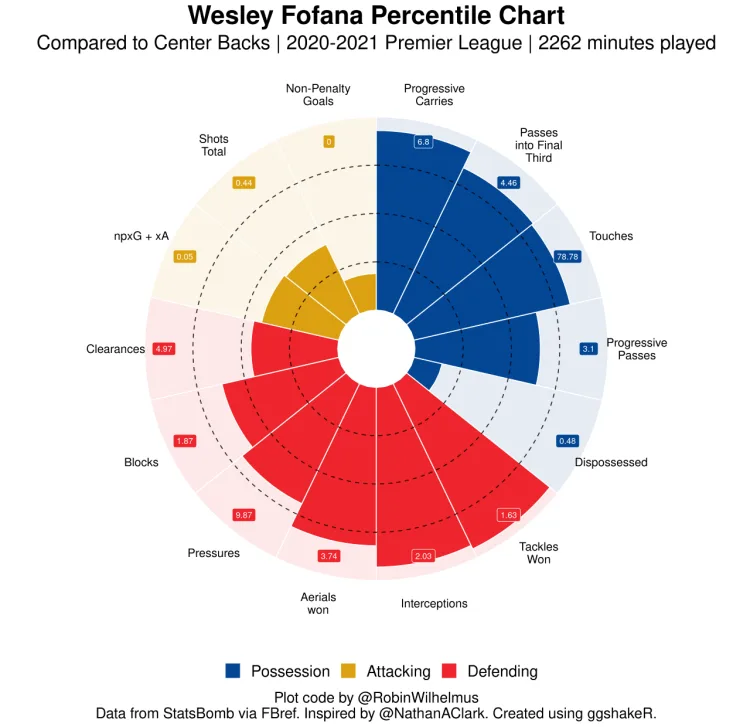
Rodgers alternated between a back-three and back-four throughout the 2020/21 season, but Fofana was mostly used as the right-sided centre-back in either case. In possession, his ball progression, especially through carrying, really stood out, while he proved to be a high-volume defender when his side did not have the ball.
Unfortunately, we do not have event data from the 2020/21 season to work with, so we will have to fall back on the smaller sample size of 2021/22, which nonetheless does give us a decent idea about some patterns in Fofana’s game. After his return from injury, Fofana mostly played in the right centre-back position in a back-four, although he did play a couple of matches in the very middle of a back-three.
This is quite clearly visible in his heatmap, which is mainly clustered in the right half-space, but also has a protrusion to the middle region of the pitch.
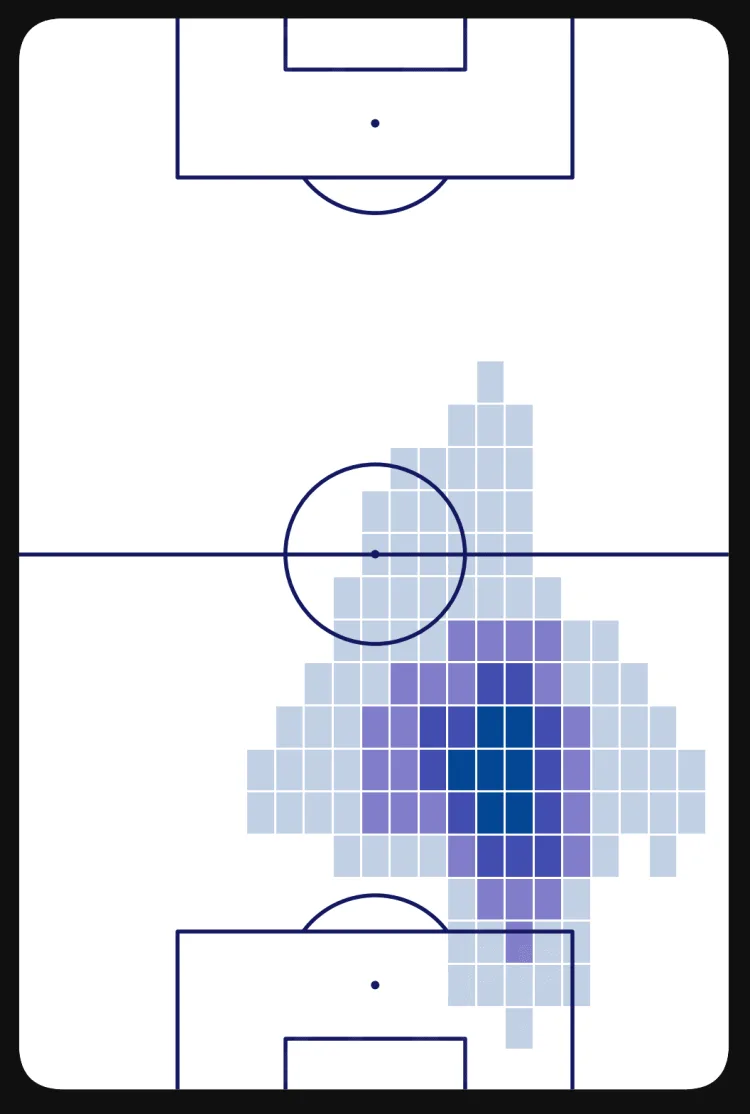
Fofana’s progressive passing was not in full swing last season, but he did show his tendency to play long balls out to the full-backs, especially from the middle of the back-three, as can be inferred by the pass origins.
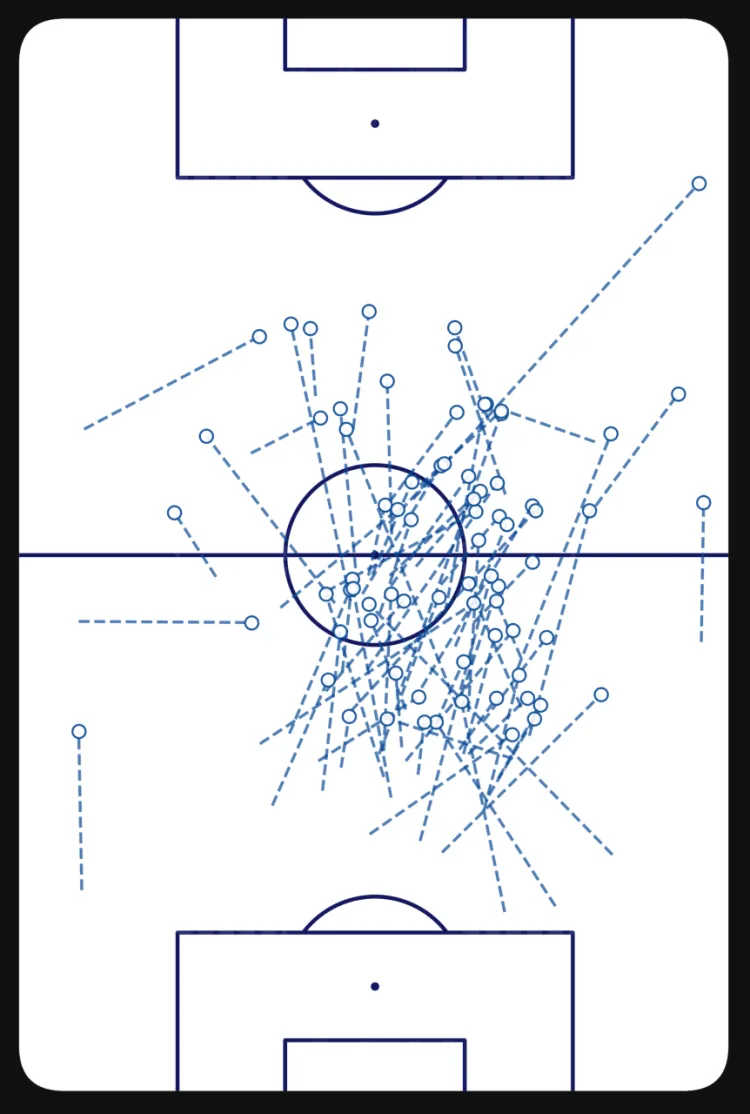
His ball carrying was in full swing, though, and again, it is clear that he was freer to get forward form the middle of a back-three.
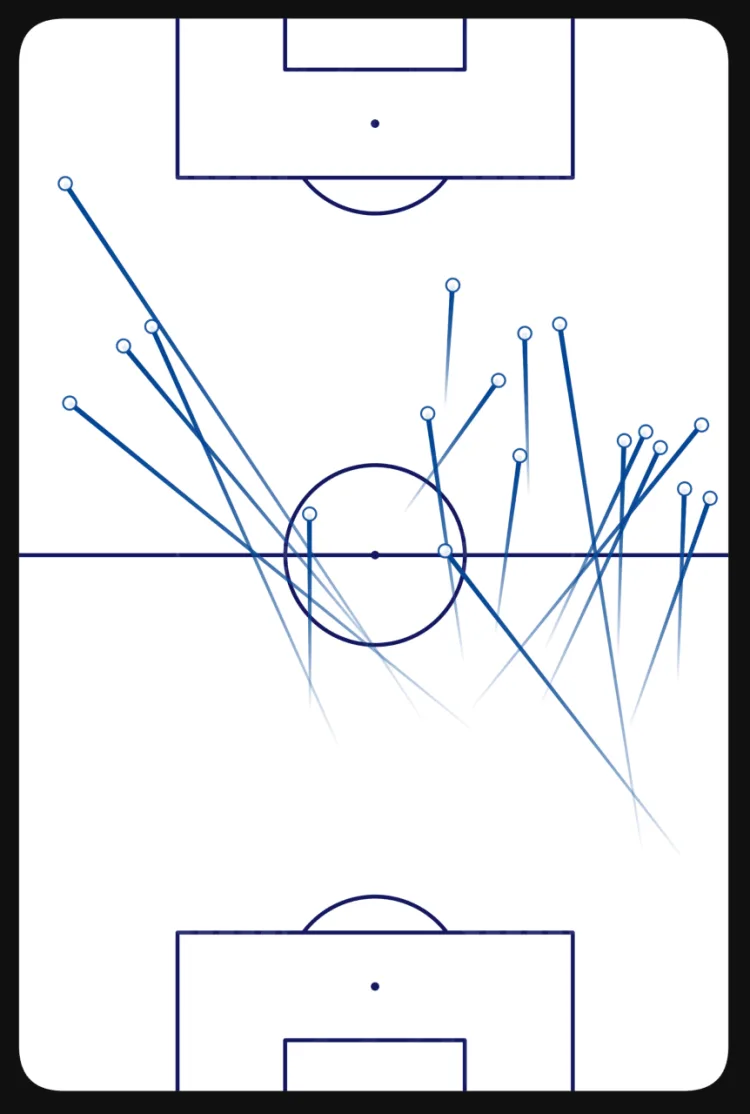
This is not a surprise in any way at all, because centre-backs naturally have more license and responsibility for ball progression when playing with two other partners as opposed to one, but the difference in volume for Fofana certainly is sizeable.
In terms of defending, though, he showed his proactivity a lot more in a back-four, as is evident from his defensive actions heatmap which is heavily centred on the right side of the pitch, especially in the regions closer to the halfway line.
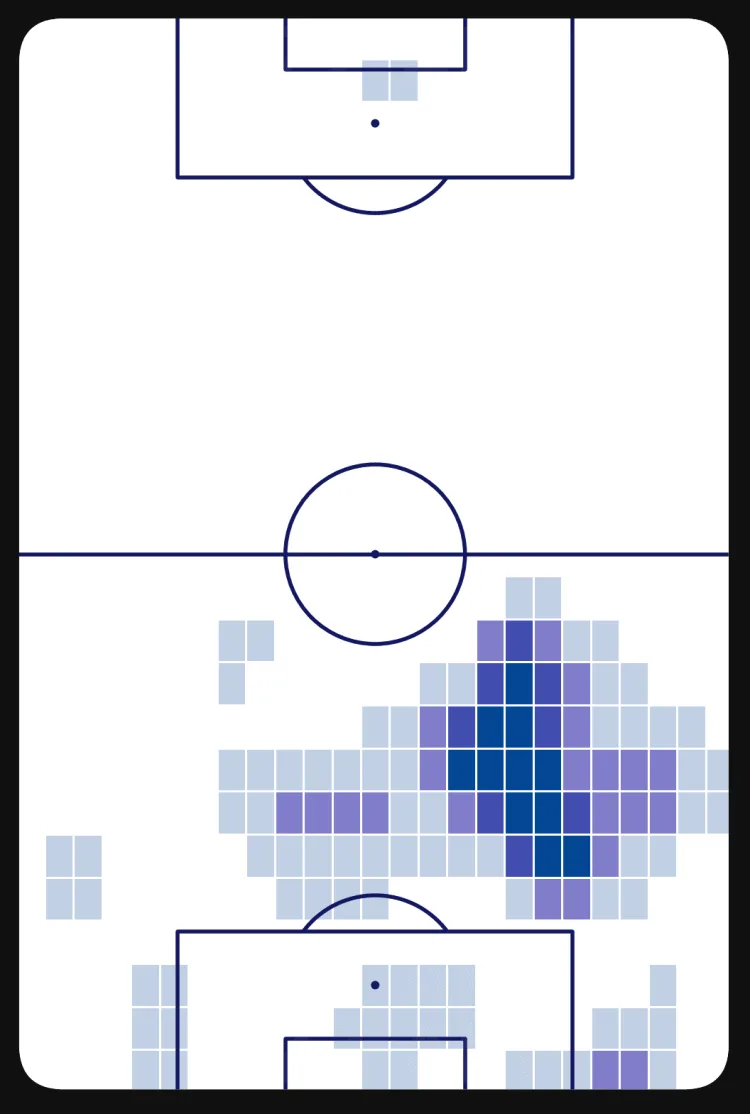
All this is to say, Fofana has proven that he can excel both in a back-three and back-four. Of course, his strengths slightly vary in both systems, but that is true for almost any centre-back in the world.
Chelsea’s problems this season and why Fofana cannot solve them
It is safe to say that the start of the season has been far from ideal for Chelsea. At the time of Fofana joining, they sat in eighth place in the league table with seven points from five games, having lost two at Leeds United and Southampton.
On Fofana’s debut, Chelsea beat West Ham 2-1 in a hugely controversial match thanks to a late winner and even later disallowed equaliser.
Naturally, therefore, there are a number of things going wrong for Chelsea. Their lack of a pure striker has come to hurt them in a number of matches, although Aubameyang has now arrived.
But more importantly, Thomas Tuchel appears conflicted between sticking to the 3-4-2-1 formation he has used for a year and a half and switching to a 4-3-3, which in turn is leading to some incohesive performances from the players.
Indeed, their defence has suffered as a by-product of this instability. Chelsea had conceded eight goals in their five league matches before Fofana arrived, and the underlying numbers didn’t look any better because their xG conceded tally was a worrying 7.5. This was the the fifth-worst tally in the league.
Of course, Fofana was not signed in response to these problems, but if he can help address any of them, his high transfer fee might be better justified.
The trouble is that this is not the case, because Chelsea’s defensive problems actually stem from their midfield, so no centre-back in the world can address the root cause of the issue.
Tuchel’s decision to switch to a 4-3-3 is quite puzzling because Chelsea really do not have the players required for a three-man midfield. They do have some talented number eights, but it is the defensive midfield position where they are lacking options. Jorginho can do a decent job in possession, but he provides inadequate defensive stability, especially in transition.
N'Golo Kante’s injury issues mean that Chelsea cannot always rely on his availability, and besides, he is not a true defensive midfielder. The next best option is Mateo Kovacic, who is also much better as a number eight.
The problem with having a midfield full of players who are not the best at tracking back and defending is that it leaves the defence exposed, after which you cannot fault any individual for goals conceded. A great example of this came in their match against Southampton, where Adam Armstrong was afforded an unforgivable amount of space inside the box in between the back line and midfield.
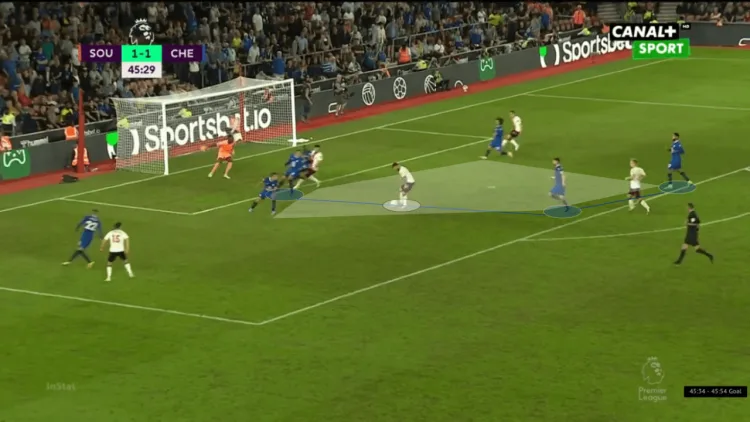
None of the defenders can be blamed for this because one of the midfield trio should have been tracking his run, but they all failed to do that. Fofana, or indeed any other centre-back, cannot stop this goal from being conceded.
In conclusion, while Fofana can improve Chelsea’s centre-back options as he can be a great partner for Kalidou Koulibaly in a back-four, or slot into the right of a three with Silva and Koulibaly, he will not be able to magically make Chelsea’s defending much better. There are tactical issues at play there, which the manager must fix while considering the personnel available in his squad.
Therefore, it is true that Chelsea are overpaying for the young Frenchman, but that has almost become the norm for big Premier League clubs now, especially in the dying stages of a transfer window. They have certainly signed a very talented player who can still continue to develop at just 21 years of age, so he has the potential to be one of the best defenders in the league.






